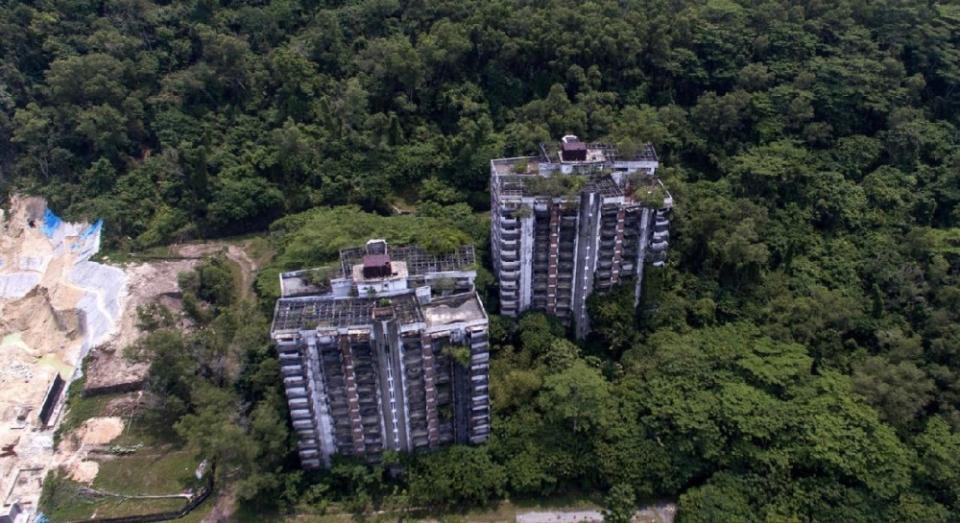Highland Towers, 30 years on: Heavy rains still rattle survivors but nation better prepared for disasters

KUALA LUMPUR, Dec 11 — Sasha Bashir is often wary when the rainy season starts at the end of the year.
During a downpour 30 years ago, she lost her childhood home at Highland Towers at the tender age of 13.
Sasha last saw it standing on December 10, 1993 before she left to attend a ballet dance course over the weekend with her friend.
The next day, one of the three blocks of Highland Towers gave way after 10 days of torrential rains triggered a massive landslide.
The tragedy, which marked the country’s worst high-rise collapse, claimed 48 lives and only two out of the three survivors pulled out alive survived.
For Sasha, attending the funerals of her deceased neighbours, one after the other, was a harrowing ordeal.
“I grappled with survivors’ guilt for the first few years.
“During the anniversary of the tragedy or whenever I hear about landslides, I wonder why I survived.
“As a result, I always felt like I am living on borrowed time — a chance that the 48 victims did not get,” she told Malay Mail, adding that she has since reconciled with her emotions.
Sasha however still has aversions to certain elements that rekindle her memories about Highland Towers.
“I don’t like retaining walls. I am very suspicious of them.
“I'm very wary of heavy rains, especially during the year-end and I don't like going to hillsides for holidays.
“In fact, I avoid reading anything about landslides at all,” she said.
Likewise, her mother, Puan Sri Annette Bashir gets that unsettling feeling at the sight of high-rise buildings and heavy downpours after the tragedy.
On that fateful day, Annette and her youngest daughter sprinted out of the building after sensing the initial tremors and moments later, the building came crashing down.
“I have not forgotten those who lost their lives that day. Their memories come back at unexpected moments and it is still hard (to come to terms with it),” she said.

The remaining two blocks of Highland Towers are still standing today despite earlier plans to demolish them for a memorial on the site. — Bernama pic
Highland Towers — 30 years later
In December 2020, then housing and local government minister Datuk Zuraida Kamaruddin said the remaining two blocks of Highland Towers will be torn down to make way for a memorial, which would include a park and a walking track.
The Ampang Jaya Municipal Council (MPAJ) however told Malay Mail that it has no plans to demolish the buildings since the proposal to do so came from the Housing and Local Government Ministry under the previous administration.
“The site is a private property and any proposal to demolish the buildings requires the consent of the owners,” MPAJ said in a statement.
Meanwhile, Sasha felt the authorities should knock down the buildings and allow nature to reclaim the land or build a simple park without disrupting the natural state of the site.
Annette agreed with the plans to establish a memorial park for the victims.

Special Malaysia Disaster Assistance and Rescue Team (SMART) commander Mohd Khairul Jamil. — Picture by Miera Zulyana
The birth of SMART
Following the Highland Towers’ collapse, the government roped in over 500 rescue workers from Singapore, France, Japan, United Kingdom and the United States to assist the search and rescue missions.
The tragedy, therefore, gave impetus for Malaysia to develop an elite rescue team for incidents involving collapsed structures.
The Special Malaysia Disaster Assistance and Rescue Team (SMART) was founded in 1994 and placed under the purview of the National Disaster Management Agency (Nadma).
Led by Commander Mohd Khairul Jamil, SMART currently has close to 200 personnel from the police, army and the fire and rescue department.
In June 2016, the United Nations (UN) recognised SMART as a Heavy Urban Search and Rescue Team since it met all the criteria set by the International Search and Rescue Advisory Group (INSARAG).
Only two South-east Asian countries - Malaysia and Singapore - have this recognition.
“Although this certificate only has a five-year validity, the UN trusted our competence and granted us an extension during the Covid-19 pandemic.
“We are now preparing for the INSARAG External Reclassification exercise to renew our certificate in 2026,” Khairul said.
As the world grapples with extreme weather events, Khairul said SMART has stepped up its preparedness to face unprecedented climate-related disasters in Malaysia.
“Two years ago, Malaysia was hit by a once-in-a-century flood and last year, the Batang Kali landslide killed 31 people.
“Despite improving our countermeasures through engineering and the use of vegetation, landslides can still occur due to extreme weather.
“SMART will remain vigilant to save lives should another disaster like Highland Towers strike us,” he said.



